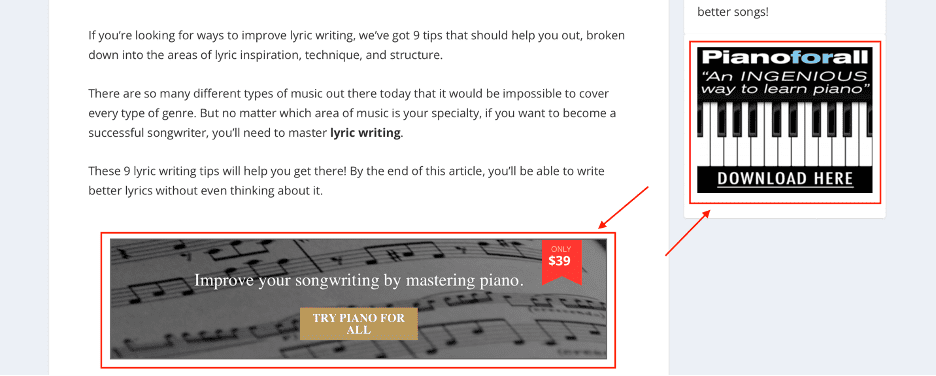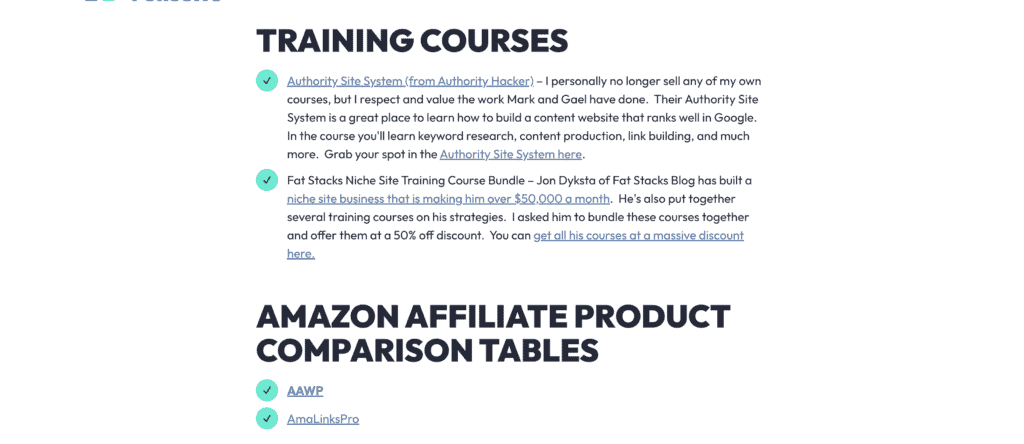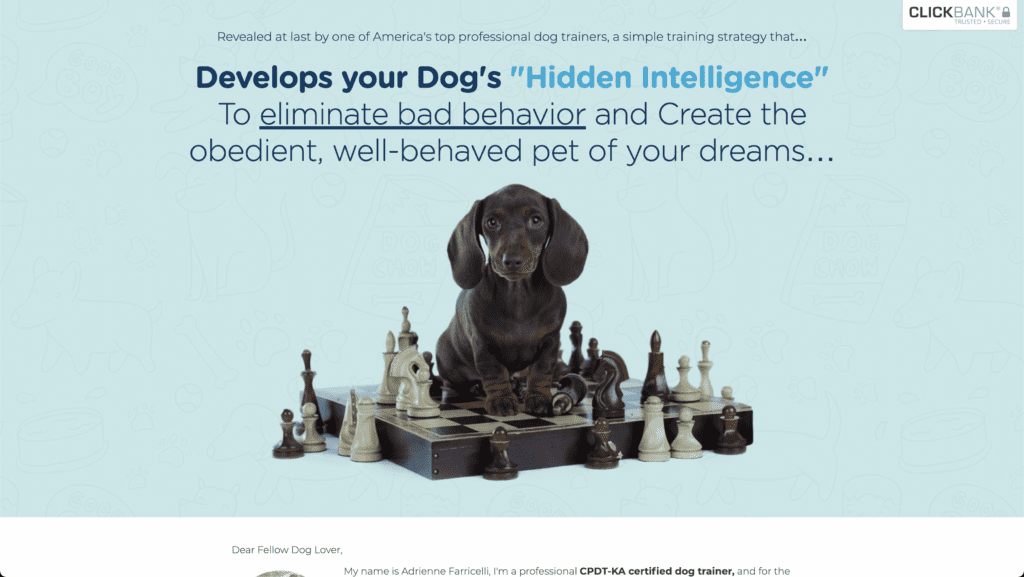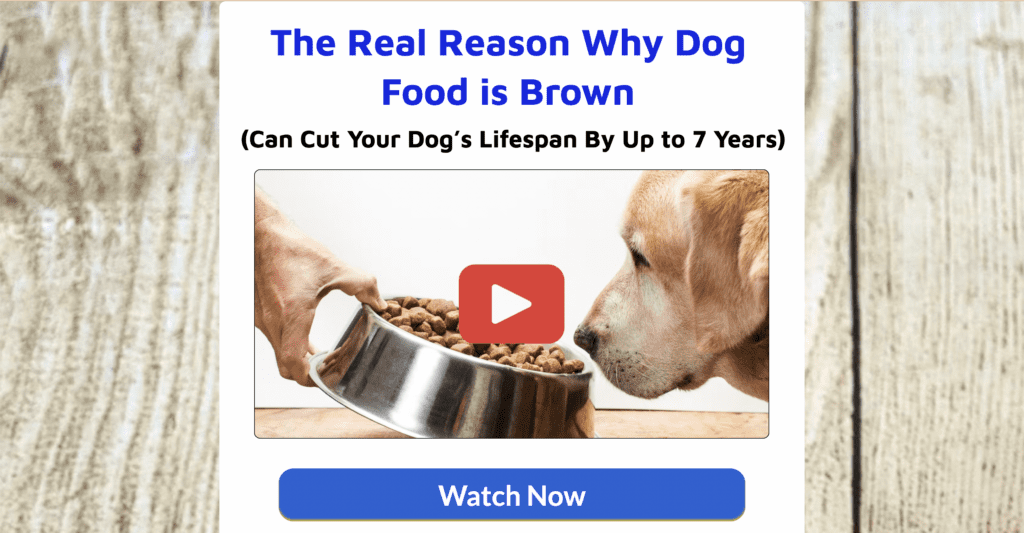Not sure what kind of content to create for your affiliate marketing business? You’re not alone!
When you’re getting started with affiliate marketing, you might think the only thing you have to worry about is getting your affiliate links up and running. But there’s a lot more to it than that!
In fact, whether you go the free traffic or paid traffic route, you’ll need to create some kind of content that will convince people to click on your links and then make a purchase. The best way to do this is by giving them something they want: information, entertainment, or a solution to their problems.
The good news is that you have a great deal of flexibility in creating the content you’re best at. There are 8 popular types of affiliate marketing content that will help you generate sales with your affiliate tracking links – read on to see what they are!
Join more than 117,000 affiliate marketers!
Get expert affiliate marketing insights delivered right to your inbox. Plus, subscribe now for a step-by-step guide to getting started on ClickBank!
1) Blog Posts
Blog posts are a content format that any type of affiliate can use to generate sales and commissions with their affiliate tracking links.
You can create blog posts that provide information about a brand or product, and then include an affiliate link so that readers can click through and purchase the item on the sales page – this gives you credit for the sale!
Blog posts can be about anything related to the product, including:
- How it’s used and why it’s useful
- How to get the most out of the product
- Why it’s a great value for the price
- What makes it different from similar products on the market
- Advantages/benefits of the product
For example, in the music niche, you might publish an article about how to write lyrics for songs.
That way, when someone comes across this article while searching for lyric writing tips, they might decide to buy the product featured in this post because they already know how well it works based on your content.

When it comes to types of blog articles, you can write how-to and informational content, or you can create affiliate marketing content like product reviews, product comparisons, and buyer’s guides.
2) YouTube Videos
YouTube is one of the most powerful video platforms in the world. It’s not just a place where people go to watch funny videos – it’s also a perfect place for you to build your brand and grow your business.

For example, you can create a series of videos where you talk about a product or brand you love and include links in each video description that lead directly to an affiliate offer or your own landing page. This is a great way to build trust with viewers until they’re ready to purchase the particular affiliate product you’re promoting!
You could also create a video reviewing one or more of the affiliate products that you promote. These videos are discoverable on YouTube, but they can also be hosted on your website or embedded into any page, article, blog post, or social media – the options for repurposing are practically endless!
Check out our full guide about affiliate marketing on YouTube to learn more.
3) Resource Pages
A resource page is a specific page on your affiliate website with a collection of links to other products or brands. Sometimes called a “recommendations” or “tools” page, this resource is a handy way to spread the word about products you like without having to write a bunch of content for each one individually.
For example, let’s say you’re writing an article about how to make money using affiliate marketing. You could include some of the best “make money online” programs in your niche in the post itself, of course. This makes sense in a buyer’s guide or product review post, as well as how-to content.
But you could also create a more comprehensive list of resources – for example, a list of the top ten courses on how to make money from home – and include your own tracking links to each one!

Resource pages are beneficial because they provide content in your niche and are designed to help readers. Affiliate marketers can use them as a way to link out to products or brands they’re promoting all in one place, as well as to any product reviews you’ve written!
4) Ebooks and Digital Courses
While digital products like ebooks and courses aren’t as popular as they were during the early days of the web, they are still one of the most popular types of affiliate marketing content. They can also be a great way to get some affiliate sales, because the links are evergreen for as long as you have people consuming your digital content.
These digital products can either be sold through your website or given away as a lead magnet on a landing page. When you create an ebook or course (free or paid), you can include links to relevant affiliate products in them. Anytime a user clicks on that link and then makes a purchase, you generate a new affiliate sale!
If you’re giving away a digital product as a lead magnet, you’ll want to make sure that it’s something people would find valuable. This might be an ebook about how to solve a problem they have, or something educational about the product/brand/service you’re promoting.
You’ll also want to make sure that there’s a call-to-action at the end of the book or course – maybe something along the lines of: “Trying to solve X? Give Y product a try!”
5) Emails
Email marketing is an excellent way to get your affiliate links in front of your readers and customers, especially if you have an established relationship with them.
First, you should build your list by collecting opt-ins with some kind of lead magnet funnel (see below).

From there, automations and occasional broadcast emails help you keep in touch with your audience. You can send them a newsletter, industry updates, tips/tricks, or tailored information about a particular product or service. Just make sure to balance your promotional emails with valuable content to keep people engaged.
For example, if your business is focused around dog training, you could send an email twice a month that includes one or two products that would be helpful for dog owners, such as ClickBank’s Brain Training 4 Dogs product!

When writing this type of content, it’s essential not only to include enticing copy about the product, but also a CTA with a link to where it can be purchased. That’s where your affiliate tracking links go.
The key for success with email is to include valuable content right in the email – not just a sales pitch – so that people will read it and share it with their friends. Recent studies have shown that product reviews in particular are a goldmine, as long as they add value!
6) Social Media Posts
Social media posts are a common type of affiliate marketing content and are also one of the most effective. Affiliate marketers and influencers can use social media to share information about a brand or product by posting on it in communities, business pages, or personal profiles on sites like Facebook, Instagram, and TikTok.
For example, if you’re an affiliate marketer promoting a brand of protein powder, you could post a photo of yourself with a cup full of protein powder on Instagram and tag the brand in your caption. This would help build engagement with your followers while promoting your favorite brand at the same time.
You can also use relevant hashtags in your posts, so that people searching for those terms will find them easily! See more about influencer marketing vs affiliate marketing.
7) Case Studies and White Papers
Case studies are a great way to demonstrate your expertise – and the expertise of your brand or product – in an easy-to-read format that can be downloaded by anyone interested in learning more about your industry or solution.
White papers are similar, but usually contain more technical information on a given subject. These content formats are often used in B2B industries like finance, software, and technology, but they can be helpful for any audience looking for technical information about a given subject, as well as links to resources or products that may interest them.
An example of this type of content might be a business case study called “How This Company Went From $20k To $200k in 6 Months Using X Software.” The downloadable PDF document or video deliverable would share an example of someone who has done exactly what you’re pitching, so instead of just saying, “we can help you make money,” you’re proving that the product works!
The best traffic source for a B2B funnel like this would probably be LinkedIn, or targeted email lists with a webinar funnel. Building your own blog or email list on the same subject would also perform well.
8) Landing Pages/Bridge Pages
A landing page is a web page designed specifically to encourage visitors to learn more about a pain point or solution, and then point them toward a specific product sales page with a text or video sales letter. You’ll use them most often as the landing page for paid ads.
The pre-lander or bridge page is usually simple: it features a headline that describes the offer and contains bullet points or images illustrating what you’ll see when you click through, or maybe a simple quiz.

For example, if you were promoting a pet affiliate product, your landing page may feature a hook tugging at the heartstrings on giving dogs the longest possible life – then include a few different links to the sales page with the actual VSL on that specific topic. (That’s where a visitor can click the “buy now” button and purchase, giving you a quick sale.)
The traffic to your affiliate landing page can come all from kinds of places, such as your social media, blog posts, videos, emails, or paid ads.
Frequently Asked Questions
What type of affiliate marketing content should I create?
You can create any kind of content that helps you promote your chosen affiliate products, including blog posts, social media posts, email newsletters, videos, ebooks, or infographics. You can also create image or video creatives for use in paid ads!
It ultimately comes down to figuring out where your audience lives online, and then making sure you test and optimize your funnel to maximize conversions.
Why should I use affiliate marketing content?
Affiliate marketing content is the perfect way to reach new customers, engage existing ones, and generate sales with your affiliate tracking links. You just need to know what kind of content your audience wants and ensure it’s tailored toward them!
Think of affiliate marketing content as the engine powering your whole affiliate business. Somehow, you have to get the word out about any products you’re promoting – and then persuade people to go check out the sales page and consider making a purchase.
How do I determine what kind of affiliate marketing content will work best for my business?
Research your target audience so you can better understand what they want from their purchase experience. Think about the types of content that your audience is already consuming. Where are they congregating online? What are they sharing on social media? What kinds of topics get the most engagement and traction?
Once you’ve done this research, consider their desires and pain points and make sure it lines up with their current stage in the buyer’s journey. For more, check out our guide on building an affiliate sales funnel.
What About Paid Ads?
If you’ve read through this article, you may have noticed that we’ve mostly emphasized organic types of affiliate content.
But the reality is, most of these formats could also be used as ad creative or for a landing page. For example, a blog post could also become an advertorial landing page for your paid campaign. A video for YouTube or social media could double as a video ad. An organic social post can suddenly be a sponsored or promoted post that you boost to improve its reach.
While it’s important to decide on a path for your business, don’t make the mistake of conflating content format with the deliverable itself. You can create organic or paid versions of almost anything, just depending on what you’re spending to distribute it.
The only question is, what type of content will deliver the ROI you’re looking for as an affiliate?
Affiliate Marketing Content Wrap-Up
We hope this guide has been helpful in introducing you to the common types of affiliate marketing content that affiliates are using to make money right now! All of these are perfect places to include your affiliate tracking link.
NOTE: Need a tracking link for an affiliate product? Make sure you’ve signed up for a free ClickBank account here!)
At ClickBank, we believe that affiliate marketing is the best way to start your own business online. The more you understand your audience and how they respond to different types of content, the better you’ll be able to tailor your approach and see amazing results!
If you’re looking to build a sustainable, long-term business from organic content or paid traffic, affiliate marketing is an excellent way to go. The best way to get started is by understanding the different types of affiliate marketing content to create.
For a deeper dive into these content options, we invite you to try our step-by-step affiliate marketing education in Spark by ClickBank. You’ll love learning how to create content that generates traffic and sales.
See you inside!






